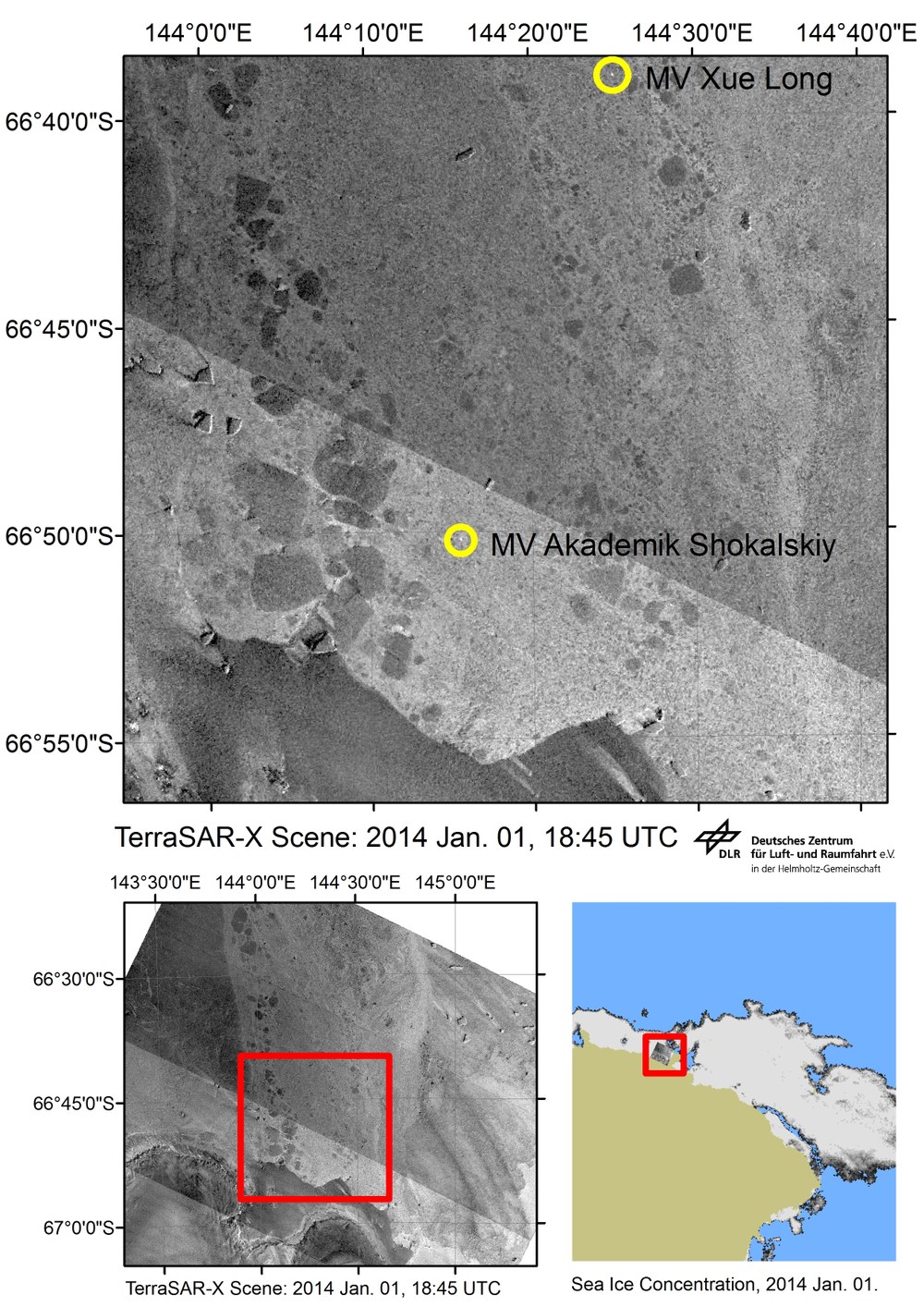Help from Space - TerraSAR-X maps pack ice

For ten days, 74 scientists and tourists were firmly stuck in the Antarctic on board the Russian research vessel Akademik Shokalskiy. Strong winds had driven ice floes into a bay and blocked the ship. Near-real-time data from EOC helped those on the spot to evaluate the situation.
The pack ice situation can rapidly change because of shifting wind directions. So scientists at DLR use high resolution data from the TerraSAR-X (TSX) satellite to provide ship crews with up-to-date information about ice conditions. Over a 30 km swath with resolutions down to 3 metres, this German radar satellite can constantly survey the ocean and sea ice through the clouds, day and night, from an altitude of some 500 km.
In the case of Akademik Shokalskiy, TSX images were processed in so-called near-real-time mode at the DFD ground station in Neustrelitz—just one hour after the scene was recorded over the Antarctic. Researchers at the DLR Microwaves and Radar Institute arranged to have the trapped research vessel recorded by TSX on 1 January 2014. The ship was detected with the help of software from DLR’s maritime research team in Bremen. Sea ice researchers from the Alfred Wegener Institute and EOC analysed the images and forwarded the results to the Emergency Response Division of the Australian Maritime Safety Authority.
The radar images show new ice (dark area) in the west, strongly deformed around the Akademik Shokalskiy (in the bright area). Large floes of less deformed ice can also be seen west of the ship. There is open water to the northeast.
The Chinese icebreaker Xue Long eventually arrived to help the Akademik Shokalskiy. But it only came within view of the immovable ship before it too was held fast by the ice. On 3 January 2014 the passengers on the Russian research vessel were flown out with a helicopter from the Xue Long to the Australian icebreaker Aurora Australis, which awaited them in open water. The two immovable icebreakers were left to wait until improved weather and wind conditions allowed them to free themselves from the pack ice.
